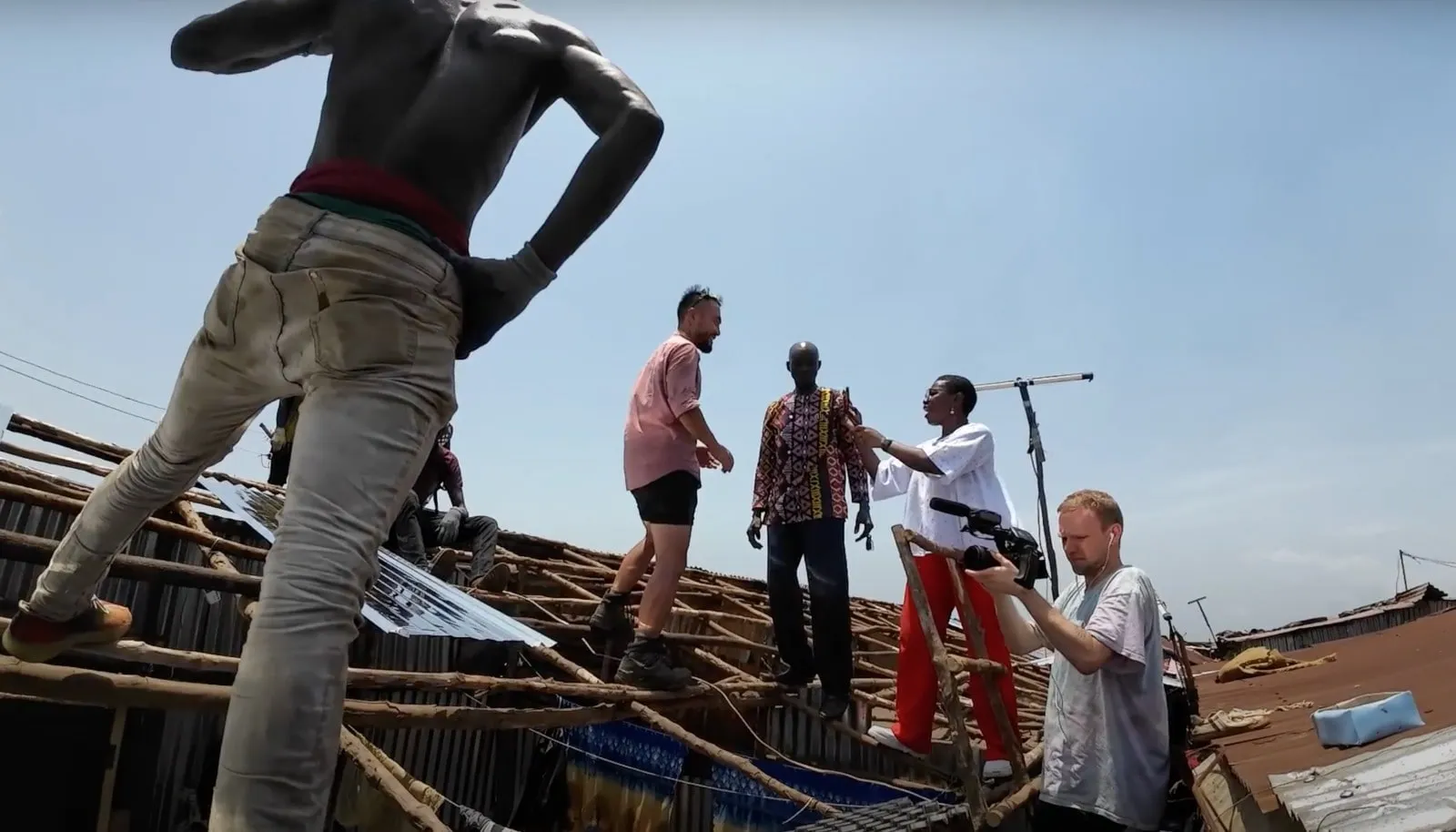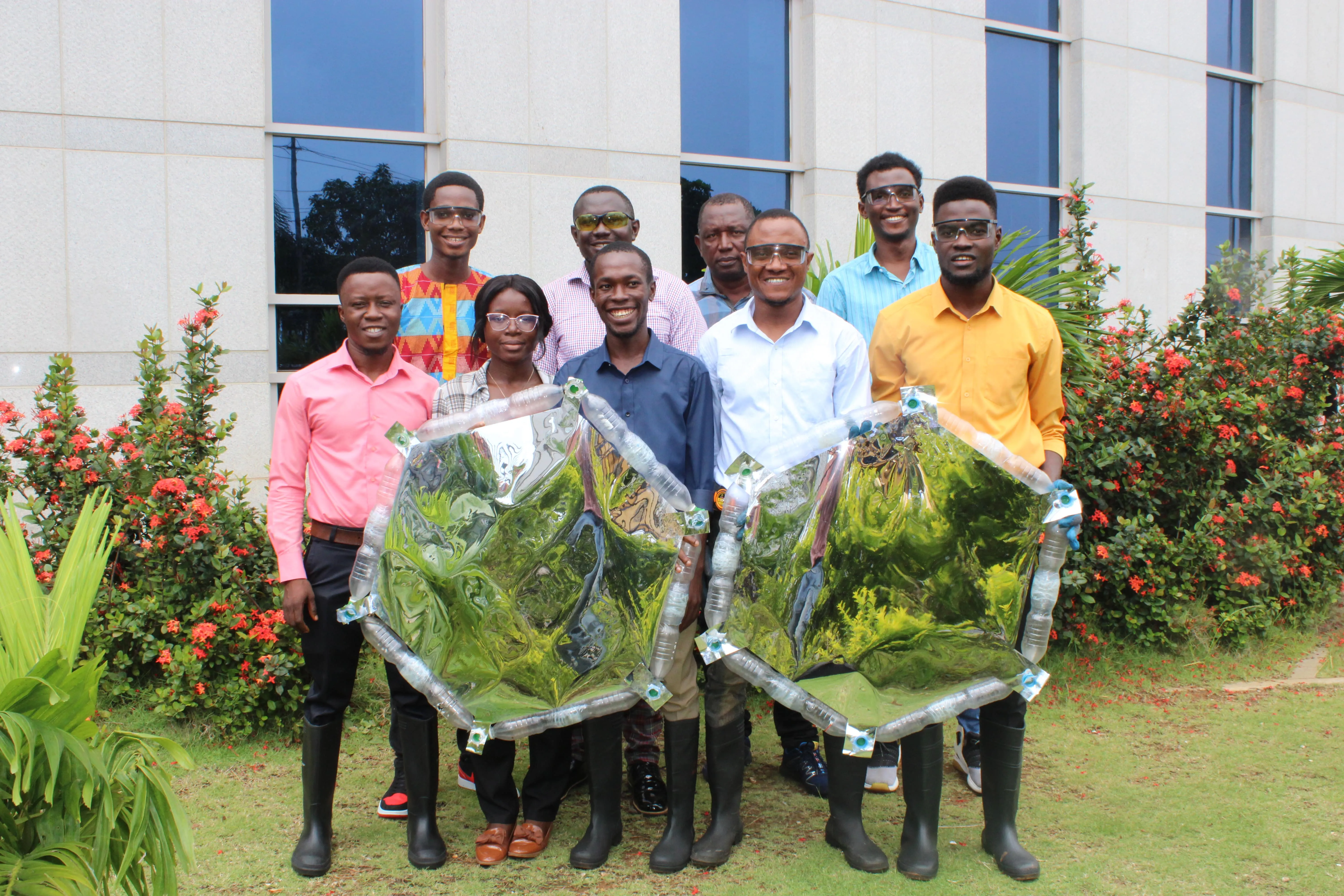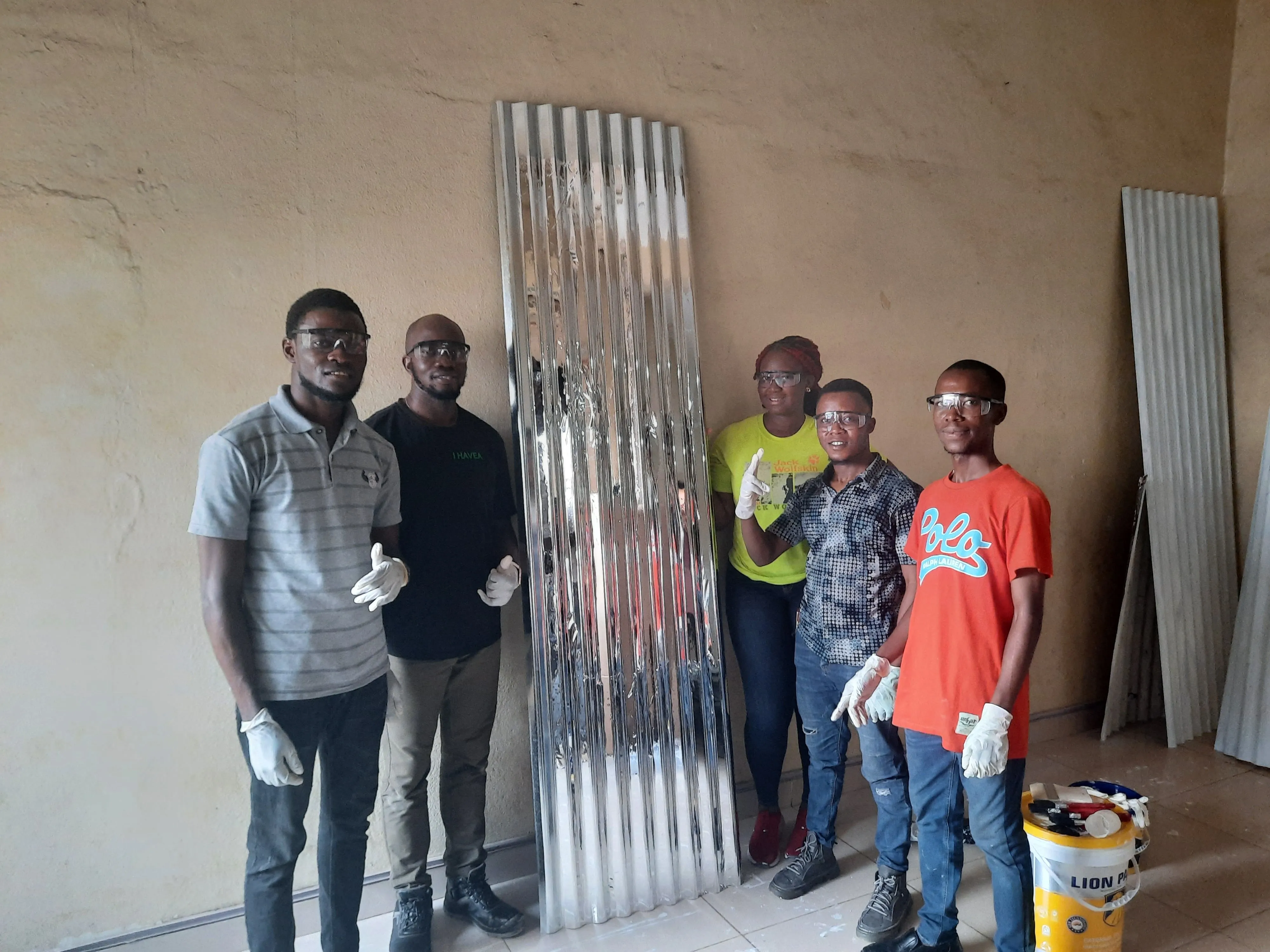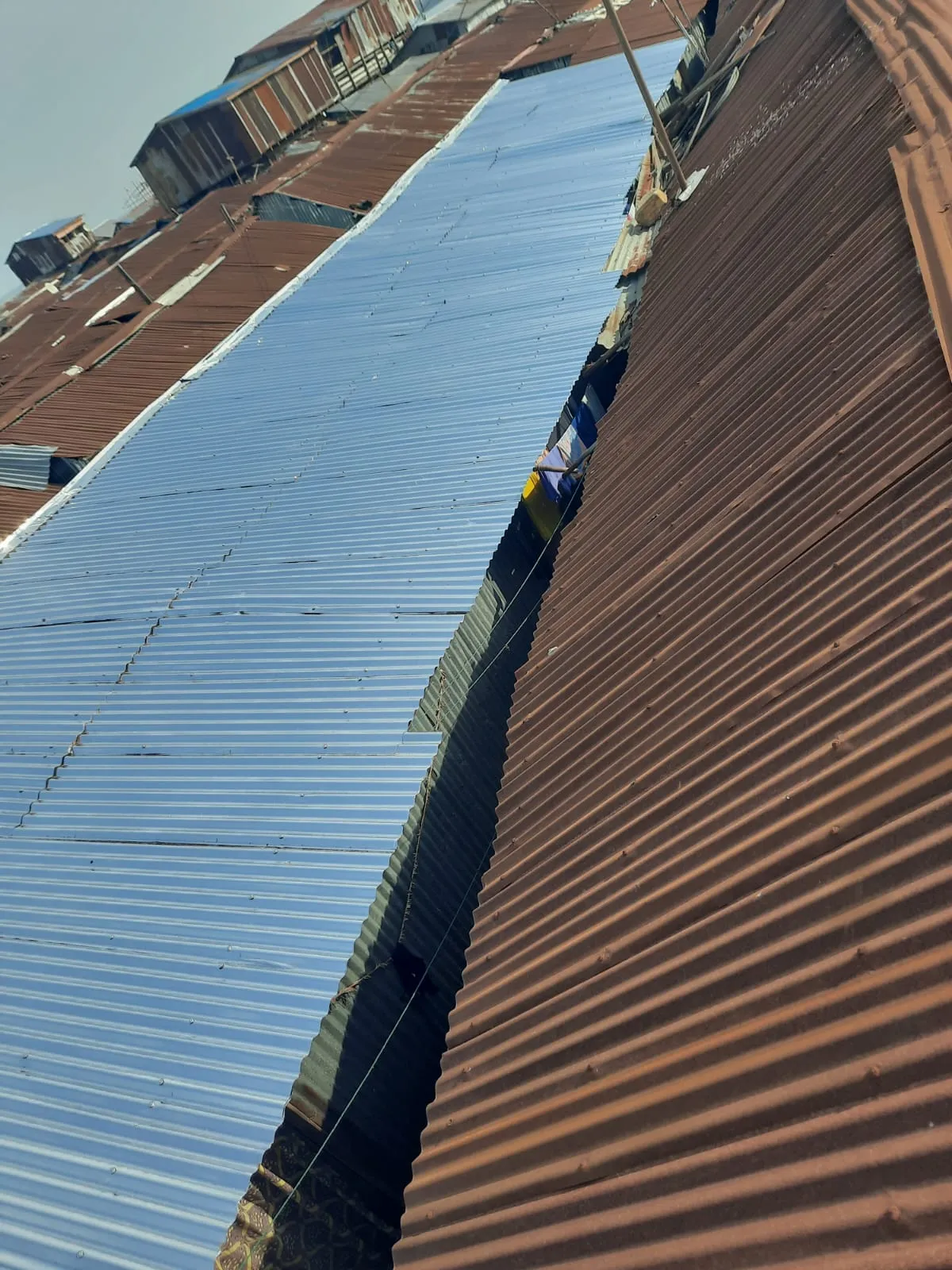Cooling solutions for Freetown's urban heat island effect
.webp)
People living in slums
300,000

Average summer daytime temperatures
83
F

MEER Ultracool coverage
1,025
m2


Unique challenges of African cities
African cities have a distinct character due to the large number of poor urban dwellers and inadequate living conditions that do not protect them from the elements. Therefore, the African context requires special attention.
Freetown's expansive geography, spanning from the coast to the surrounding mountains, makes it a unique African city. However, this distinctive feature also makes it more susceptible to the adverse effects of climate change, particularly with the urban heat island effect. As the Intergovernmental Panel on Climate Change reported, Sierra Leone was ranked as the third most vulnerable country to climate change in 2017, following Bangladesh and Guinea Bissau. The excessive heat exposure that Freetown residents experience severely threatens their public health and well-being. The city experiences scorching temperatures that can soar over 40°C (104°F) during the dry season, which spans from December to April. Even during nighttime, the heat remains intense, with air temperature close to 30°C and humidity above 80%, making it quite uncomfortable for residents and visitors alike.


Cooling solutions for Freetown's oppressive heat
Around 33% of the populace inhabits 74 informal settlements, including Kroo Bay, frequently in disaster-prone regions like the seafront or hillsides. These dwellings are often densely clustered and constructed using temporary materials that generate and retain solar heat, resulting in an oppressive environment. Furthermore, access to fundamental necessities such as water and electricity, essential for cooling, must be improved in these regions.
Fortunately, organizations like MEER are taking action to address this issue by implementing reflective film technology on rooftops. This innovative approach has significantly reduced indoor temperatures, providing a safer and more comfortable living environment for those affected by the heat.
Eugenia Kargbo, the chief heat officer of Freetown in Sierra Leone, has been trying various methods to combat the city's heat. When presented with MEER's proposal to use mirrors to cool down the buildings, she was open to giving it a shot. Her response was, "Why not?"
MEER's efforts to alleviate heat-related challenges
In late February 2023, MEER initiated the "Cool down Freetown!" project with Eugenia Kargbo, the City Council's Heat Officer, and several recent graduates from Fourah Bay College in Freetown. Kargbo expressed excitement about the potential of MEER's contribution to assist individuals in dealing with the harsh heat.
Mariama Barrie, a 34-year-old mother of three, lives in a one-room hut in a poverty-stricken district. She sells homemade charcoal for a living but struggles with the heat, which causes chest pains and breathing difficulties. Although needing to understand climate change fully, Barrie recognizes that temperatures are increasing. She describes the heat as unbearable and compares it to being cooked alive, like pigs in an oven.
Unfortunately, due to the adverse effects of climate change, experts have projected that such sweltering days will become more frequent in the future.


Urban heat island effect: Understanding the factors and exploring innovative cooling techniques
The urban heat island effect is a phenomenon that exacerbates the heat in urban areas. Several factors contribute to it, including the lack of vegetation, reduced airflow, and the use of more heat-absorbing materials on buildings and roads. Due to these factors, Kargbo became increasingly interested in finding innovative ways to cool indoor spaces as the buildings in the city are becoming increasingly hot.
Sierra Leone's capital, Freetown, has a slum called Kroo Bay which looks like an overheating engine from afar. The West African sun beats down on thousands of rust-coloured tin shacks that stand in rows, separated only by streams of sewage filled with trash.
Experimenting with roof coatings and reflectors to improve cooling techniques
MEER, an organization dedicated to advancing knowledge in adaptation and mitigation, has initiated a project involving a team of highly-skilled scientists and tradespeople. The team has been tasked with carrying out a series of experiments to improve cooling techniques. To achieve this, they have painted the roof of one residence a bright white colour while simultaneously installing a new metal roof on another. The buildings were chosen based on their similar construction and roof area, totaling approximately 180 square meters. Through this innovative project, MEER seeks to determine the effectiveness of these cooling techniques and their potential impact on sustainable living.
The current project is taking on multiple obstacles by utilizing cutting-edge technology to analyze the efficacy of implementing mirrors close to the ground to reflect sunlight. The primary objective is to impede the absorption of sunlight, which results in temperature elevation and latent heat, which leads to heightened humidity levels. This innovative approach aims to mitigate the negative impacts of excessive heat and humidity, which can harm the environment and human health.


Assessing the impact of MEER's technology on local environmental conditions
Our research program is focused on gaining a comprehensive understanding of the effects individual mirrors and small mirror arrays can have on local environmental conditions. This will allow us to accurately predict the potential impacts that large-scale deployment may have on climate and the environment. Additionally, a key objective of our program is to leverage this research to build local capacity in various fields, such as natural and social sciences, engineering, and data science.
Our research examines how solar reflectors impact important aspects of city living, including housing, transportation, recreation, and access to goods and services. We have been placing mirror sheeting on residential rooftops to track heat levels 24/7 and gather data.
Our team has observed the effect of different roofing materials and coatings on the interior temperature of buildings. The results show that buildings installed with a new zinc roof have maintained a slightly cooler interior temperature of 1 to 2°C during the day compared to buildings with older, rusted roofs. Buildings painted white have an even lower interior temperature with an average of 3°C cooler. However, the coolest interior temperature was achieved by buildings covered with a unique film, which resulted in a significant difference of 6°C. Moreover, buildings with mirrored exteriors and the unique film coating maintained an average roof temperature of 25°C cooler than those without. These findings suggest that the choice of roofing material and coatings can significantly impact the interior temperature of buildings, providing valuable insight for future construction and renovation projects.
Double layer passive cooling
In the West African region, a considerable amount of waste that obstructs the proper functioning of sewage systems and pollutes beaches are single-use plastic bottles, especially the ones used for beverages and water. These bottles account for more than half of the discarded resources in volume. In response to this critical issue, the engineers at MEER have developed groundbreaking solutions to transform these plastic bottles into valuable resources. One such solution is the double-layer roof, which has the potential to revolutionize the construction of housing in slum areas.
This application's success is discovering that the plastic bottle's diameter matches the wavy patterns on the commonly used corrugated zinc metal sheet. This perfect match allows the bottles to act as spacers, maintaining an "out-of-phase" stacking relationship between two layers of zinc with parallel grooves. This creates a space containing the air that heats up during the day under solar radiation, becoming lighter and less dense than the surrounding air, resulting in an upward flow towards the upper end of the slanted roof by the stack effect behind how chimneys work. We are turning the roofs into passive solar vents that reject the heat using renewable solar energy.





-min.JPG)















.webp)